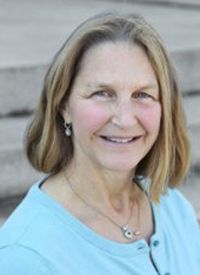Breast Density Exceeds Other Risk Factors for Breast Cancer
A new study found that high breast density surpasses other risk factors for breast cancer.
Karla Kerlikowske, MD

Karla Kerlikowske, MD
Women with high breast density have an increased risk of developing breast cancer, exceeding other known risk factors such as family history of the disease, personal history of benign lesions and later-in-life childbirth.
Those are the findings of a new study conducted by researchers at the University of California, San Francisco (UCSF) and published in the journal JAMA Oncology.
Researchers looked at risk factors in more than 200,000 women; of those women, 18,437 had varying stages of breast cancer and 184,309 did not have cancer. The women ranged in age from 40 to 74 and were enrolled in the Breast Cancer Surveillance Consortium, which is a national collaborative network of seven mammography registries.
“We looked at all of the breast cancer cases in the Breast Cancer Surveillance Consortium, and basically found that the risk factor that explained the development of breast cancer, in the largest number of women, was high breast density,” Karla Kerlikowske, MD, researcher in the department of medicine and epidemiology and biostatistics at UCSF and senior author on the study, said in an interview with Oncology Nursing News. “Breast density is a common and strong risk factor, so it contributes a lot to the development of breast cancer.”
Overall, 4747 (89.8%) premenopausal and 12,502 (95.1%) postmenopausal women with breast cancer had at least one breast cancer risk factor. However, breast density was the most prevalent risk factor for both premenopausal and postmenopausal women. Researchers noted that 39.3% of premenopausal and 26.2% of postmenopausal breast cancers could potentially be averted if all women with heterogeneously (more than half of the tissue in the breast is dense) or extremely (dense tissue is present in more than 75% of your breast) dense breasts shifted to scattered fibroglandular (which is mostly fat with a few dense areas) breast density.
Additionally, the study reinforced the fact that obesity, too, can increase the odds of a woman developing breast cancer. Among postmenopausal women, 22.8% of breast cancers could potentially be averted if all overweight and obese women attained a body mass index of less than 25, noted the authors.
“We can do something about obesity by choosing healthy foods and exercise,” she said. “Breast density is also modifiable. Women who are very high-risk can take tamoxifen. Breast feeding is also thought to lower breast density, and the younger people are when they have their children and the more children they have also lowers breast density.”
Dense breasts make it more difficult for radiologists to see cancer on a mammogram. The American Cancer Society states that dense tissue may mask a mass or tumor because both look white on the mammogram.
Kerlikowske believes that breast density leads to breast cancer because of high cellular content in the breasts, and also the communication between the epithelial cells and stroma tissue.
She added that physicians and researchers should be using risk prediction models to try to identify women who are at risk of invasive breast cancer.
Common factors associated with breast cancer, such as first-degree family history, a history of benign breast biopsy and delaying childbirth until after age 30, each accounted for less than 10 percent of cases in the population studied.
Kerlikowske said it is important for women to understand and pay attention to their bodies because, contrary to popular belief, there are risk factors associated with developing breast cancer.
“We found that at least 90% of the women who had breast cancer had at least one of the risk factors we looked at,” she said. “So, I think knowing your risk factors and discussing those with your primary provider, and then use our risk calculator, which includes breast density, to calculate the risk.”
Kerlikowske and her team hope to look at some of the automated measures of density to refine risk in the future.
Nurse Practitioners Weigh in on Data From the San Antonio Breast Cancer Symposium
January 16th 2023Loyda Braithwaite, MSN, RN, AGPCNP-BC, AOCNP; and Jamie Carroll, APRN, CNP, MSN, highlight presentations from the 2022 San Antonio Breast Cancer Symposium that will influence oncology nursing practice.



